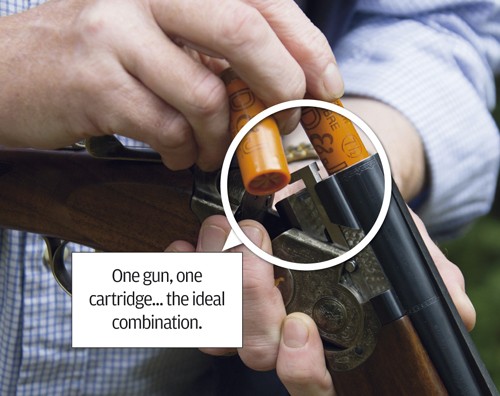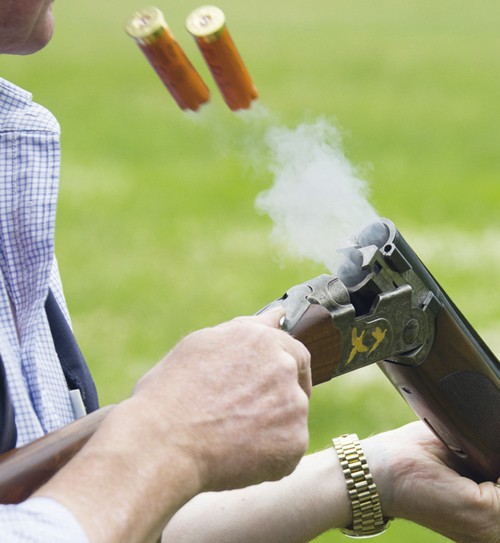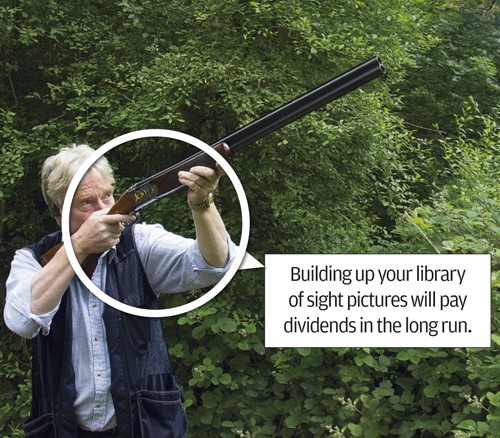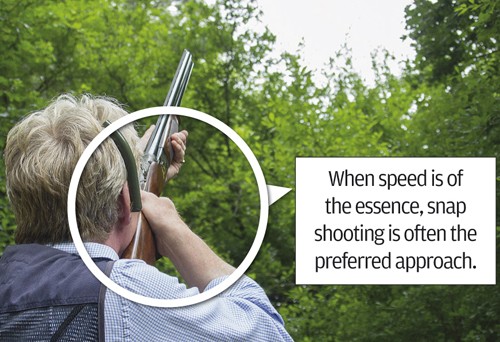A useful checklist by John Bidwell
Practice makes perfect and if you could spend all day on the clay ground practising your shooting there is no doubt that you would improve your clay shooting scores.
However life has a habit of getting in the way and so there’s only so much time in the week you can get out there with your gun, working on improving your technique.
The trick is to make the practice count. (If you’ve had a break from shooting clays, read these five things to do to get your clayshooting back up to scratch again.)
Here are my top tips for making things look better on your scorecard. (Read our tips on what to wear clayshooting.)
Tips for improving your clay shooting scores
One gun, one brand
Just use one gun and stick with one brand/ make of cartridge. Consistency is the name of the game. Consult an expert and check to see whether your gun fits you correctly.

If you’re struggling because your gun doesn’t fit you then all you are doing is making things hard for yourself. You’re never going to shoot to your full potential. People adapt (physically) to make the best of an ill-fitting gun, so the obvious thing to do is make the gun fit and then concentrate on ensuring that your mount is exactly the same every time.
The gun should be an extension of your body and this is why I’m a great believer with ‘get a gun you’re happy with and stick with it.’ Have a gunsmith check your gun fit as soon as you can.
Both eyes
Shoot with both eyes open. I know that for some shooters with an eye dominance problem it simply isn’t possible, but you should always try to to do this.

Using all of your peripheral vision enables you to visually pick up the target earlier than it would if you close or dim one eye. Gaining these few extra moments means that your gun mount and swing will be less hurried and smoother – an essential element in the clay breaking process.
Self-belief
Believe in yourself. So much of shooting is about getting yourself in the right mindset. Before you load the gun, imagine the clay breaking – before you even think about calling for the bird. You’ve got to believe you’re going to break the clay, so much so that missing it should come as an earth-shattering surprise. If you think that you’re going to miss you probably will.
Watch
Watch the flightline – the path of travel that the target is taking. You need to know where the bird is coming from and where it’s going to.

“But of course I always watch the clay before it’s my turn to shoot” is a typical phrase you hear every day on the shooting ground. But you need to ‘really’ watch the bird. Following the line of the clay with your finger concentrates the mind and also helps in choosing the kill point. Concentrating and remembering is the object of this particular exercise.
Really scrutinise every target before you shoot, work out in your mind what you’re going to do before you mount the gun and again you will improve your clay shooting scores.
Dry mounting
Commit to practising dry mounting your gun for 10 minutes every day. Or at least three days a week. This is guaranteed to improve your clay shooting scores and is probably one of the best things you can do to improve your shooting.

Practice
Shoot as often as you can at as many targets as you can and always concentrate on remembering the sight pictures. Hit any target and subconsciously you should remember what you did to ensure you break the next, similar bird.
However, you need to be able to remember that scenario (and recall the sight picture for that exact type of bird) in a week, a month or any time in the future to be any good. Just remember the old adage: the harder I practise the luckier I get.
Lesson
How many times have you heard shooters approach a stand and say ‘oh no, it’s a so and so’ (rabbits being the classic example.) If you’re constantly missing and you simply haven’t got a clue what you’re doing wrong, have a lesson or two just on that type of target.
A good coach will spot your mistakes and put you right almost immediately.

Or if it’s a case of ‘sometimes I hit it, sometimes I don’t’ the best thing to do is to have an all-out blitz of practising on that – and that alone – type of target.
Shoot two or three hundred, say, rabbit-style targets in a session, and repeat the exercise every day for a week. What was your bogey bird should end up being one of your favourites. You’re giving your library of sight pictures a massive refresher course – and your confidence a boost.
Snap shooting
I’m a great believer in instinctive or snap shooting and if asked to do so, I reckon even an average shooter can mount the gun (within a split-second), subconsciously assess the amount of lead required, pull the trigger and smash the clay.
I’d also bet that none of them will be conscious of how much lead they gave the target, or why. All that they know is whatever they did produced the correct result.
Instinct plays a huge part in shooting and it could be the defining factor between the good and the great.

To shoot instinctively a shooter should be able to vary their technique, thus being able to employ every style of shooting – pull away, maintained lead or swing through.
In fact, if you’re competent with all these styles, you probably won’t even know how you’re shooting – all that will be evident is that you’re breaking the clays while your fellow competitors are missing. Practise shooting in a different style as often as you can and, in time, I promise you will improve your clay shooting scores.
Stance
Stance is all-important. If your feet are pointing in the wrong direction when you call for the bird your body will be completely out of kilter and you’ll inevitably find that you struggle to break the clay.

You’ll simply run out of swing because you physically cannot turn any more!
Ensure that the toe of your leading foot is pointing at the (intended) kill point. Get this wrong and you’ll always struggle.
Weight
Always keep your weight on your front foot as you pull the trigger. Your balance and swing will be second-rate if you’re in a neutral, neither one thing nor the other, type stance.
Possible exceptions could be when taking a high, driven bird when it’s virtually above you, for instance. Then you’re going to need to be able to transfer your weight onto the back foot so as not to impede your upper body movement and the swing of the gun. (Read our list of the best jackets for clay shooting.)
This article was originally published in 2014 and has been updated.




